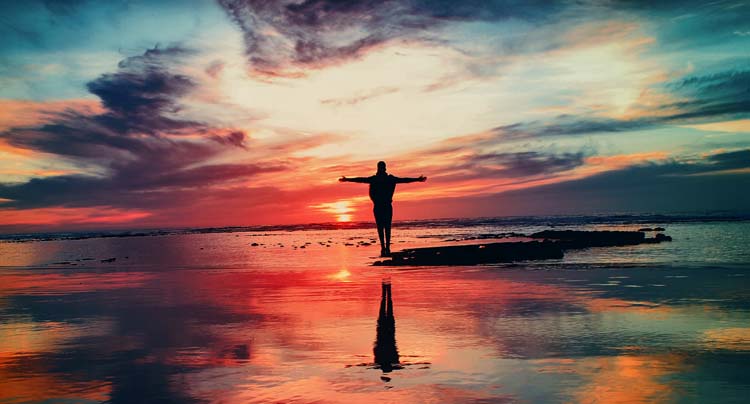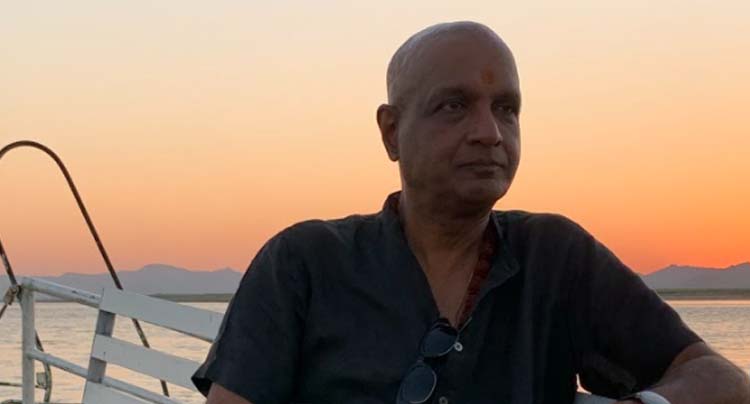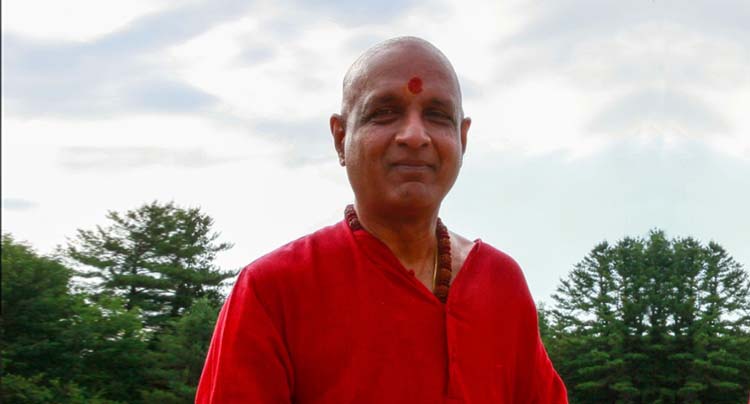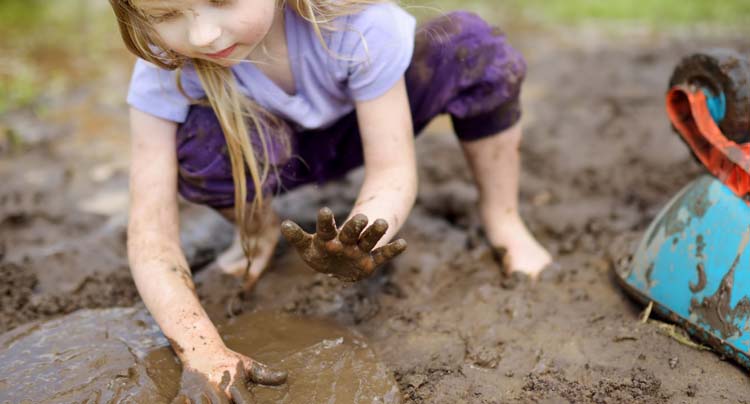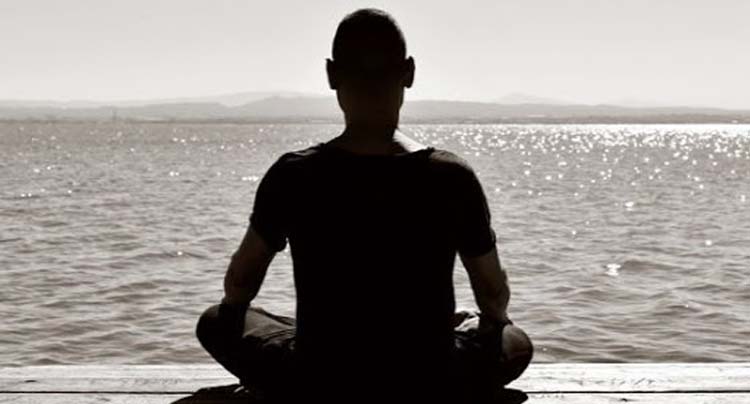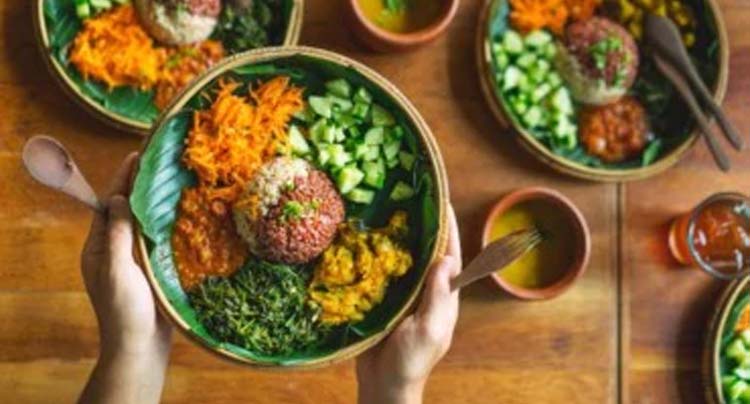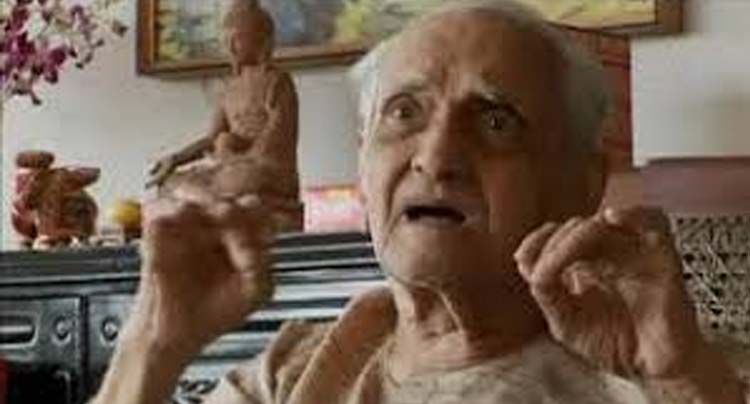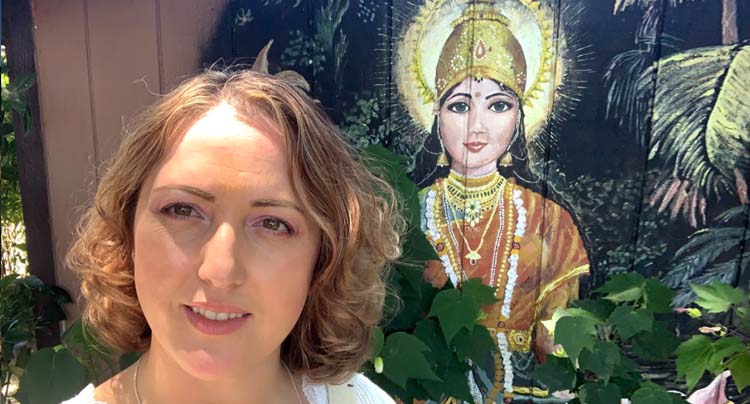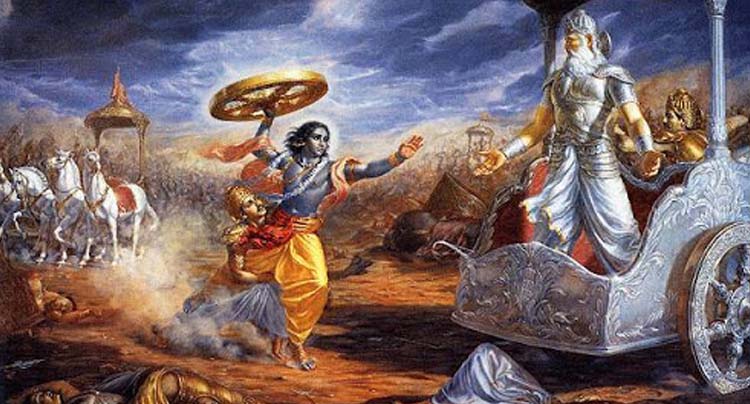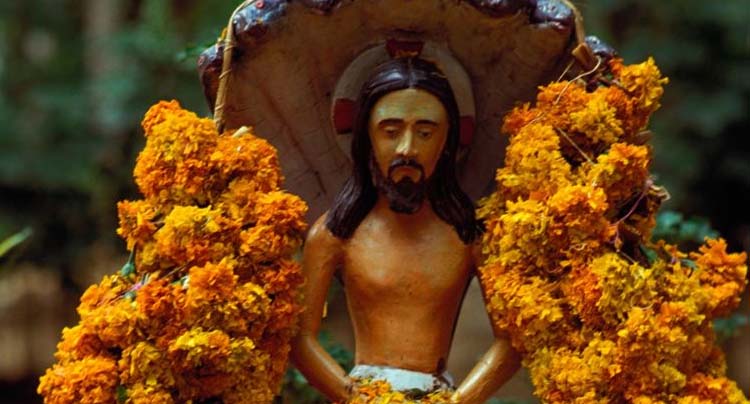Are you a vegetarian?
Let me ask you again.
Are you really a vegetarian?
If your answer is still yes, continue to read and see if you still maintain that you are a vegetarian.
Well, why are you a vegetarian?
Is it because you were born and brought up that way and have continued to be a vegetarian?
Or is it because you believe it is the healthy way of eating?
Or is it because you believe that killing animal life for human consumption is wrong?
Or perhaps a combination of one or more of the above reasons.
Many of those who claim to be a vegetarian fall in the first category (especially in India). They were born to vegetarian parents, were brought up in a vegetarian household, and have continued on the same path. They take vegetarianism for granted and never question what makes one a vegetarian or what it really means. For the most part they either remain unaware or choose to ignore that in their day to day life they may be intruding into the animal world inadvertently. The health benefits of a vegetarian diet are well researched, well documented and well known. This includes the known biological fact that the human body is designed only for a plant based diet and not for
consumption of dead animals. However, the moral aspect of being a vegetarian is more subjective and debatable, and a matter of one’s personal philosophy. I prefer to say that the justification for killing animals for consumption is subjective and debatable, and a matter of one’s personal choice.
True spiritual learning and growth can only be experiential and not anecdotal. What follows is a discussion based upon my own experience around the world.
Are you a vegetarian?
Yes. I was born to vegetarian parents and brought up in a vegetarian household. For the most part, my circle of immediate family and friends were all vegetarians, and that is the only diet I knew and accepted. As in most Indian vegetarian families, the diet centered primarily around dhal, subji, roti, rice, in various forms and combinations. I never gave this aspect of daily life any thought.
It was after I went to the USA, when everything changed. The vegetarian diet that I had taken for granted in India went for a toss. I was exposed to a very different culture with food habits alien for my insulated Indian mind. I was now forced to question every item I bought in the grocery store or ordered in a restaurant. The obvious ones like fresh produce (fruits and vegetables), grains, cereals, lentils, dairy etc were not a problem. This was in the early eighties well before hybrids, GMOs and organic became buzz words. I started coming across ingredients and names that I had never heard of before, like polenta, soya, tofu, gluten etc. I would avoid any strange or unknown
name not wanting to risk ending up eating meat in some form. The silver lining was that I started cooking myself. I started calling my mother regularly to ask how to make my favorite items, sabudana khichadi, upama, poha, various vegetables, dhals etc. I started experimenting on my own. If I had to eat out, I would seek out Indian restaurants.
This is about the time vegetarian diet was starting to become more prevalent in the USA and Europe. Like almost everything else in the USA, there was a plethora of writings, commentaries and other information on benefits of being a vegetarian. They all focused around the health benefits and the moral aspect. I started taking a hard look at my own background and asking myself why was I a vegetarian. This is also the time when people in the USA and India would inquire how I managed to survive as a vegetarian. In India it was generally understood that any one migrating to the USA would inevitably start consuming meat. For the mainstream Americans, vegetarianism was a
fad, totally misunderstood, and riddled with ignorance and arrogance at their own ‘superior’ diet.
This was the turning point for me. From being a ‘born into a vegetarian family’ vegetarian, I became a conscious vegetarian fully aware why I was one. Most importantly, I no longer needed to be defensive about being one. Yet, it was uphill, especially as I rose up the corporate ladder, interacted with the business world, and traveled extensively. Business lunches and dinners, meals with colleagues, invitations to homes and parties, room service, flight meals, all became an obstacle to be crossed. But my resolve introduced me to various support groups like vegetarian societies, and I became more involved as an activist. Most importantly I started understanding the importance of knowing exactly what is it I was consuming. I made it a habit (to this date) of not buying any packaged item without reading the label and knowing the ingredients. In the meanwhile, many vegetarian Indians coming to the USA were shedding their vegetarian diet, partly as a necessity (so they claim), partly as a status symbol, partly to appear to merge into the mainstream and not having to stand out like a sore thumb.
As I quit the corporate world and immersed myself fully on the spiritual path, I became more sensitive to what was on my plate. Why it is that all the teachers and masters, retreats and ashrams and all places of spiritual growth and learning all over the world (not just in India) are vegetarian? As the energy channels open up and energy starts moving through the chakras, one inevitably becomes sensitized to one’s environment, especially food and nutrition. At the physical level, the body starts rejecting any food that is animal based. Intuitively one starts sensing something is wrong even before one has taken the first morsel. This is when I learnt and realized for myself the simple truth that when an animal is about to be slaughtered, it immediately becomes cognizant of this, becomes all tense and stressed, and this negative energy remains in the flesh and bones after it has been slaughtered. Any healer or energy therapist can recognize this, whether it is the negative energy of individuals, food containing killed animals, hybrid produce, or food laden with preservatives, chemicals and fertilizers.
I have a weakness for pizza, and pizza without mozzarella is like pani puri without the pani. One day along this journey I discovered that almost all cheese contains rennin that is derived from a cow’s intestine. I was depressed and disappointed at learning this. I do not have a particular liking for cheese except mozzarella, especially mozzarella made from buffalo’s milk, fresh and creamy. I was not going to accept defeat, so further research revealed that any cheese can be made with a plant based rennin, and that such cheese was available in many
places. I also found out that certain pizza places do use vegetarian cheese. It was not the end of the world after all!
My attention now shifted to items that we generally do not associate with being vegetarian or not; items of personal hygiene (toothpaste, soaps, shampoos etc), personal care (cosmetics, perfumes, lotions etc.), health supplements (vitamins, antioxidants etc.) and medicines. One can argue that these are not consumed by the body, so what is the problem? Well first of all, all these items are absorbed into the body directly or indirectly. Secondly, (this is where the question again arises why am I a vegetarian?) if being a vegetarian is a belief and a way of life, then should it not extend to everything that touches one’s daily life? Should one not question everything that one comes in contact with and see if it involves a slaughtered animal? Where does one draw
the line? What about clothes and footwear? What about the use of leather? What about furniture and other household items? I looked at every item that I was buying and consuming or using,and made a conscious decision whether I will continue to use it, stop using it, or substitute it with a known vegetarian alternative. This was based upon
a fair amount of my own research supplemented with loads of information available on the web, and discussions in groups and forums. The most disconcerting part of this conscious exercise was the discovery that almost every item we use at home or outside contained the remnants of killed animals. The most pleasant part of the exercise
was the discovery that there was a vegetarian or close to a vegetarian substitute available for most items. If one was sensitive and cared enough about being a vegetarian, one would seek them out. If not, life would go on as always.
The thing that bothered me the most was the use of animal products in various supplements I was taking; vitamins, antioxidants, immunity boosters etc., some in a capsule form. I learnt that capsules are made from gelatin that is also derived from various parts of a cow and other animals. However it was not long before I found brands that used
capsules made from plant based gelatin. Even non capsule based formulations are now widely available in vegetarian versions. The problem is with allopathic medicines, and so far, the all powerful pharmaceutical industry has not been influenced enough to research and introduce vegetarian versions of its various drugs. Until then I am happy to stay with ayurvedic and homeopathic treatments for the times that I need to take a remedy. The key of course is to stay healthy so as to avoid a situation where one may be forced to take allopathic medicines.
Did you have any interesting experiences along this journey?
• The first interesting experience I had was just after arriving in the USA. One of the easiest and cheapest things to eat out would be a slice of pizza. The first time I went to a street corner pizza place in New York, I saw something listed as pepperoni slice. My mouth started watering at the idea of a hot, spicy pepper on my slice. I was about to take my first bite, when I saw a poster on the wall advertising pepperoni with a picture of a lump of meat. I almost threw up! This is one of the most common experiences for someone arriving fresh from India.
In my early years in the USA, my boss once took a bunch of us to dinner for a celebration. He knew I was a vegetarian. I was aghast when I found myself seated in a steak restaurant! When it was my turn to order and not knowing what to order from the steaks and the lobsters, my boss looks at me with surprise as if I had come from another planet, and asks the waiter to get me a large salad! Thereafter I could barely eat my salad as I sat among
a bunch of carnivores devouring dead cows and clawing away at the lobsters with their various implements of dissection. I have never been able to get that image out of my mind. The icing on the cake came at the end when my boss asked me how the salad was!
I was at a business dinner in a French restaurant. The host knew that I was a vegetarian. I scanned the menu numerous times and except for desserts could not find anything that sounded vegetarian. Then I noticed an item under entrees with sweetbreads. The first thought that came to mind was ‘shahi tukda’, and I wondered to myself why would it be listed under entrees and what was it doing in a French restaurant. When it was my turn to order, I asked for that particular item. The host looked at me and said, ‘but Pradeep, I thought you were a vegetarian’! When I went home and looked up sweetbreads, it turned out to be the innards of a baby animal like cow, pig, goat
etc.. It still beats me why it would be called sweetbreads! That was the first and last time I allowed my vegetarianism to embarrass me in public.
Soup of any kind is one of the most common items in a vegetarian’s diet. Early in my years in the USA, I discovered french onion soup. The description would typically list the ingredients as onions, croutons and cheese. In particular, I used to frequent a hotel in Boston during my business trips there. I would end up ordering french onion soup from the room service menu. One day, I came across the recipe for this soup in a magazine. I was shocked to read beef stock as an ingredient in this soup. Next time I went to the hotel, I spoke with the chef, and sure enough, beef stock was used in the French onion soup on their menu. It had never crossed my mind to think of the
stock that is used in soups. It was a big learning experience, and from then onwards, unless I am certain, I always ask about the stock in the soup.
I was a long staying guest at a top hotel in the suburbs of Bombay. Everyone in the hotel knew I was a hardcore
vegetarian. They had just opened a new pan asian restaurant, and I was invited to dine there. As is common in many
restaurants, the menu clearly indicated which items were vegetarian. I scanned the menu and saw one of my favorite
items, som tam which is a raw papaya salad. I ordered it. As soon as it was served, I knew something was wrong. I took one small morsel, and sure enough it tasted and smelled of fish. I called my friend the restaurant manager, and explained that this item shown as vegetarian contained fish. He said that was not possible, and called the new Thai chef who had made the salad. She came to the table all smiling expecting to get accolades for her cooking. I asked her whether the salad contained shrimp paste, and she excitedly said yes, it contained shrimp paste especially imported from Thailand! The restaurant manager apologized profusely. Some years earlier I had a similar
experience with ‘pad thai’ at another Thai restaurant, and ever since I realized that shrimp paste or fish oil is an essential ingredient in Thai cuisine, I avoid that cuisine unless I am eating in a vegetarian Thai restaurant.
There have been a few other mishaps along the way, being served a beef burger instead of a vegetarian burger at a
restaurant in the UK, being served a chicken sandwich instead of a vegetarian sandwich in a coffee shop in Pune and also in a major hotel in Rabat, Morocco. In some of these incidents when the error is pointed out, they coolly remove the dead animal from the dish and bring it right back! It has happened on flights as well.
How did you mange on your travels?
I have been to 69 countries so far, and in no country did I starve or felt famished due to my vegetarian diet. And I rarely have to rely just on fruits or salad or bread. I always like to try out the local cuisine or at least something with an international flavor. Eating in an Indian restaurant (and almost every country I have been had one) is always a last resort when there is absolutely no other option. As soon as I reach a hotel, I have someone write the following on a piece of paper in the local language: ‘No meat, no fish, no seafood, no chicken, no eggs’. If there is a local word for vegetarian, I have that written down as well. I carry this with me all the time, and unless I am in a vegetarian restaurant, I show this paper to the waiter and wait for him to express acknowledgment that he has understood. It is not enough to just say vegetarian since there are as many interpretations as there are countries. I have come across many vegetarian restaurants that include eggs or chicken or seafood in their menu. It is also not enough to say ‘I eat only vegetables’, because then I am served nothing but a plate full
of raw vegetables!
Some years ago, I discovered www.happycow.net, a website listing vegetarian restaurants in over 100 countries. I never leave home without checking this listing for my destination. Through happycow.net, I have experienced some of the best vegetarian meals around the world, covering almost every type of cuisine. It is updated regularly and has reviews from people who have eaten at a restaurant. It also lists grocery and health food stores that carry prepared vegetarian meals.
Travelling is a great learning experience from every point of view, and especially as a vegetarian one gets to see so many different perspectives of this lifestyle. From the delicious, fresh and wholesome cuisine of the Middle East (falafel, baba ghanoush, hummus, tabbouleh, baklava) to the olive oil drenched and sun ripened cuisine of Italy (pastas, pizza, antipasti, minestrone, breads) to the couscous of Morocco, paella (think biryani) of Spain, empanadas (think samosas) and other delicacies of Central and South America, fresh steamed tamales of Mexico, dumplings, rolls, noodles and soups of numerous vegetarian Chinese restaurants all over the world, rijstafel (think thali) of Indonesia, roti canai (think paratha) of Malaysia, momos of Tibet, Ethiopian ajeera with an array of vegetables and lentils (think thali served on a large dosa); the list is endless. Some of the best falafels I have had are on the streets of New York and in Rotterdam. My first experience of rijstafel was in Amsterdam, as was my first couscous on the Left Bank in Paris. The best pizza I have ever had was at a nondescript joint somewhere on the border of Luxembourg and Germany!
Some of the most sublime dining experiences and meals I have had are outside India. When I was living in Boston, I heard about Café DiCocao in the middle of rural Maine, about 3 hrs away from Boston. This café is open just once a week, every Saturday evening, for a tasting dinner. The first time I went, I did not know what to expect from this middle of nowhere vegetarian restaurant. There was no menu, no prices. One has to call in advance to let Cathy know you are coming. Once you reach there, you are completely in her hands. It is a one woman show. No help of any kind either in the kitchen or outside. Starting with the first course, it turned out to be a feast for the senses….the taste, the aroma, the presentation. Each morsel was sublime. She would emerge with each course and explain in detail what it was and where she learned it. There were flavors from all over the world. This went on for about two
hours while one is comfortably reclined on various cushions thrown all around. It is as if I was her house guest. When it is time to pay, there is no bill. She asks you to pay whatever you wish and drop it in a big box. She has no way of knowing who paid what. It has been one of the most memorable dining experiences ever.
I remember Sublime in Fort Lauderdale, one of the best vegetarian gourmet restaurants in the world. I showed up without reservations and was told it may be a long wait. The ambience was so inviting, the people were so nice, that I would have waited if I was to be the last person to be seated. I am glad I waited. It was one of my first
experiences of fine dining in the vegetarian world. And then there is Hangawi in Manhattan, a Korean restaurant. It is the closest to the temple cuisine of Japan and Korea that I have come across outside those countries. Temple cuisine is part of the Buddhist tradition that is prevalent in Japan and Korea. It is typically found in Buddhist temples, consists of traditional sitting on the floor with a low wooden table placed in front, and served by male and female students or residents of that temple. Numerous small bowls consisting of various items are placed on the table, and each item is explained. The entire experience is very similar to the traditional style of eating in many Indian households even today. I also remember Gandhi in Budapest. I went to the restaurant expecting it to be an Indian restaurant. It turned out to be anything but! It resides in an underground cavern of sorts, dimly lit with candles, communal tables, and a limited menu. There was no sign of India anywhere. Later when I asked about the significance of the name Gandhi, I was told it was because of the non-violent nature of the food that was served!
There is the wonderful restaurant Malabar in Santacruz, California run by a Sri Lankan. All his staff inside and outside the kitchen are women from various parts of the world. While the restaurant is open every day, on Saturday evenings he has a tasting dinner, no menu, no price. One never knows what next will emerge from the kitchen, adding to the excitement of the dining experience. At the end, one pays whatever one wishes. The first time I dined there with a group of 10, and started to pay him $150. He refused, saying it was too much! How can the food at such a place not be sublime? And then there is Greens in San Francisco, David Bann in Edinburgh, and numerous more to
mention here.
For those from India who crave the Indian fare but do not care for the ubiquitous chana masala, mattar paneer fare found in the majority of Indian restaurants all over the world, there is Govindas and various restaurants run by disciples of Sri Chinmoy (under different names in different countries). These places offer no frill, wholesome,
inexpensive, vegetarian meals that are hybrid i.e. have an Indian touch or some Indian items along with various other items. I also learnt a hard lesson while flying. Many airlines offer special meals when booked in advance. Some of these meals are religion based, i.e. kosher meal, Hindu meal, Moslem meal etc. I remember ordering a
Hindu meal on a flight and finding chicken on my plate. Later on I made inquiries and found out that in the Western mind, a Hindu is an Indian and since chicken is a popular part of Indian cuisine, it is usually offered in a Hindu meal! From then on I realized I need to ask for a Hindu vegetarian or Asian vegetarian or just vegetarian meal.
How do vegan and certain other beliefs fit into the vegetarian world? A vegan avoids all animal products including dairy and honey. A vegetarian does not avoid dairy or honey. A vegan believes that consuming dairy and honey supports the animal rearing industry and this industry is responsible for harmful practices towards animals. I do
not subscribe to this view. This is where I believe the ability to discriminate between the good and the bad is essential in order to make an informed decision, rather than blindly following a path. It is true that in the West and other parts of the world, milk is derived from many cattle that are primarily reared for slaughter purposes, and these cattle are subjected to harmful and painful practices. Similarly honey cultivated from commercial bee farms are subject to harmful practices. However, not all milk and honey is derived in this manner. There are
many dairies that rear cattle only for the milk, and the cattle die a natural death. This is definitely the case in India. Similarly, since honey is a natural byproduct from beehives, there are many sources of honey both in India and abroad that follow the natural path and do not force the production of honey in any unnatural way. The key is to look for dairy products and honey from these sources.
By blindly avoiding all dairy and honey, I believe the vegans are missing out on a number of health benefits that can be obtained from these products. While milk itself is not considered healthy for human consumption, its byproducts like butter, ghee and yogurt are extremely healthy and in fact essential for a vegetarian. According to naturopathy and many other beliefs, the human body is incapable of consuming milk. A mother’s milk is the only milk appropriate for a child, and this should be continued for as long as possible. Any other milk cannot be a substitute for mother’s milk. In fact experientially it has been shown that consumption of milk (especially cold milk) is one of the major causes of various respiratory and digestive problems. Undigested milk produces phlegm. This has been my own experience. In the USA I had started to develop various respiratory problems like congestion,
sinusitis, wheezing, breathlessness, constant colds and sore throats. Some of these were attributable to the harsh cold and dry climate of New York. But in spite of temporary relief from various remedies including homeopathy, they recurred frequently. In Boston, my naturopath doctor asked whether I consumed milk. A glass of milk a day was a habit with me since childhood. This was supplemented with ice creams, milk shakes, cold coffee and sundry other forms of milk all the time. He suggested I try and eliminate milk from my diet and see if it helps. I gave up all consumption of milk except in tea and coffee. Sure enough, within a month I started to feel the difference. For the
most part I have continued with this habit, except when I need to have warm milk as part of an ayurvedic remedy.
However milk when set into yogurt changes its characteristics completely. The live bacteria in yogurt works wonders for one’s digestive system and keep it in shape. Similarly, butter churned out of yogurt and ghee clarified from butter are very essential sources of good fat for a vegetarian. The vegans I believe are missing out on this
important element of a vegetarian diet.
There are many vegetarians, especially in India, who avoid all root vegetables or just onions and garlic. This is mainly for religious reasons. Those who avoid all root vegetables believe that by uprooting these vegetables they are harming the soil and various forms of insect life that survive in and around the soil. Even as a hardcore vegetarian I find it difficult to subscribe to this view point, Uprooting of vegetables when they are ripe is no different than plucking fruits and vegetables from the branches of plants and trees, or plucking certain fruits and
vegetables like melons, pumpkins etc that grow along the ground. Similarly, onions and garlic are avoided by certain vegetarians because they believe these have taamsik qualities that impurify the mind. These individuals are primarily devout followers of Krishna. In all my readings about Krishna, I have yet to find any mention directly attributable to Him that validates this belief.This is yet another blind belief based upon someone’s interpretation that forms the core of religious practice. Onions and garlic have tremendous health benefits, and similar to turmeric, sesame and various other ingredients, are very essential for the human body. They are particularly beneficial in warding off inflammations, infections and heart diseases.
Silk is another item that is avoided by all vegans and some vegetarians. I generally avoid silk unless I am sure it has been derived from silk worms that have not been killed to extract their sap. Like everything else, one needs to discriminate between blind faith and reasoned belief. With awareness, one can do this and reap the benefits of a full and proper vegetarian diet.
What is the difference between being a vegetarian in India and around the world? It is the difference between sensitivity, caring and understanding in most places around the world and callousness, indifference and ignorance in India. For a supposedly vegetarian country like India, happycow.net lists only 176 vegetarian restaurants in India out of a total of over 13,000 worldwide, and the majority of them are south Indian. Happycow.net does not include restaurants that serve vegetarian dishes alongside animal based dishes, and I subscribe to this as much as possible. The negative energy emanating from having slaughtered animals in a common kitchen is enough to contaminate the vegetarian cooking in the same kitchen. All food imbibes the vibrations of the person who has gathered it, prepared it for cooking, cooked it and served it. It is obvious that a person who is also working with dead animals in any way will transmit that stale and negative energy to the vegetarian food as well. This is easy to experience if one is sensitive enough and vibrating at a higher frequency by having the same dish in a mixed vegetarian restaurant and later in a vegetarian restaurant. I extend this belief to avoiding sharing a table with someone who is not a vegetarian.
This is not the case outside India for the most part. First of all there are far more vegetarian restaurants of all cuisines in most parts of the world than there are in India. Secondly, even in a mixed restaurant, the chef and the kitchen staff are very sensitive to their vegetarian clientele, and either have separate sections or separate utensils or take special precautions. This is partly due to the risk of legal action in certain developed countries that have laws protecting consumers from being served items that may be contrary to their belief system or their
health requirements. A few years ago, McDonalds and Pizza Hut were both sued by a group of Indians in the USA and both companies had to settle the lawsuits and make amends to their recipes. McDonalds was sued for including beef seasoning in its french fries and Pizza Hut was sued for using various animal based flavors in its pizza sauce. Both of these are most common items consumed by Indians while travelling abroad under the assumption that these have to be vegetarian! When I was served a sandwich with chicken in a restaurant at the Hilton hotel in Rabat, I sued the hotel company in the USA; they immediately apologized and settled with me. This is in contrast with my experience with Café Coffee Day in Pune. When I tried to take action against them for serving me a chicken sandwich, I got nowhere, and became an object of ridicule for trying to do something so stupid. The typical
reaction was why I did not just ask for another sandwich! Lard is a common medium of cooking all over the world including India. It has been banned in many cities and countries including New York. Of course it has been banned not because it is an animal product but because it is a monounsaturated fat and all monounsaturated mediums
of cooking have been banned. I wait for the day it will be banned in India. Similarly MSG, a staple additive in Chinese and other Asian cooking, while not a concern for vegetarians directly since it is not derived from an animal product but extremely harmful to human health, is increasingly avoided in the West but used liberally in India. I have seen people who avoid onions and garlic but lap up Chinese cuisine laden with this chemical.
Pure vegetarian cuisine in India is limited to certain parts of south Indian (not Chettinad or Kerala or Andhra), Gujarati, Marwari (not Rajasthani), and the generic dhal subji roti cuisine of most of the Hindi belt. How many upper crust and fine dining vegetarian restaurants does one come across in India? Swati and Soam in Bombay are the rare jewels. I have been looking for a vegetarian Bengali restaurant in Calcutta or a vegetarian Chettinad, Keralite, Goan, Konkani restaurant anywhere in India, with no luck. I did find a vegetarian Kerala restaurant, Rasa, in London, one of the best meals I have ever had. And yet in New York alone (the haven for vegetarian dining) I have dined in vegetarian restaurants from practically every cuisine of the world, Mexican, Korean, Chinese, Ethiopian, Vietnamese, Guatemalan, Peruvian, Sri Lankan, Tibetan, Afghani, Middle Eastern. I have attended dinners organized by the Natural Gourmet Institute in New York (specializing in vegetarian cooking) with special tasting menus.
It is far easier to find vegetarian items on the shelves of supermarkets outside India. They are clearly labeled. In the UK, this has been the law for a long time. In the USA and most European countries, while not a law, the practice is very prevalent. If one is not sure, one will always get an informed answer when asked. In India that is not the case. Knowing full well that a can of Heinz baked beans comes in both the vegetarian and animal version, I picked the animal version from the shelf of a famous supermarket in Pune and asked one of the assistants whether it was vegetarian. He stared at me and said yes, of course, they are baked beans! If he had bothered to read the ingredients on the label he would have noticed chicken stock in it.
A vegetarian outside India has, generally speaking, made a conscious decision to become a vegetarian. It is rare that he or she is born into a vegetarian family. It is rare to find a completely vegetarian family that is not Indian. Therefore he or she is far more committed to the belief and cause of vegetarianism and applies it to daily life far more diligently than a vegetarian in India. If one were to compile statistics one would find that more people in India are starting to eat meat than those converting to vegetarian. It is the opposite in the Western world. Being a vegetarian is a way of life for those who are conscious vegetarians. They apply it to all aspects of their life. In India for the most part being a vegetarian implies cooking and eating a vegetarian meal. Sometimes this is further restricted to cooking and eating a vegetarian meal at home. I come across many individuals who say. ‘I am a vegetarian at home but eat meat outside.’ Or worse still, they themselves do not eat meat, but have no problem cooking and serving meat at home! In various workshops and talks when I inform people that pizza and jello, two of the most favorite items consumed in India, contain pieces of a dead cow, I get nothing but a blank stare. How is it that if a piece of dead cow is served on a plate along with dhal and subji, one would immediately shirk and purify the entire kitchen immediately, but if the same piece is camouflaged in a slice of pizza or a cup of jello, one does not even blink an eye? A conscious vegetarian would never step into a McDonalds even though they offer vegetarian items on their menu. He is aware that McDonalds is responsible for slaughtering millions of cows a year to serve their customers all over the world. In Dhamma it is said that an action that even indirectly causes harm to anyone is an unwholesome action. By stepping into McDonalds to have a vegetarian burger, a vegetarian is supporting a business that is causing untold harm to the environment.
I have come a long way in my journey as a vegetarian, from being a born vegetarian to an embarrassed vegetarian to a defensive vegetarian to a conscious and fully aware vegetarian. Today, for the most part, when I go to a restaurant I have to ask whether they serve any vegetarian items. I wait for the day when a carnivore goes to a
restaurant and has to ask, ‘do you serve meat’? Until then, let me ask you once again: Are you a vegetarian?

